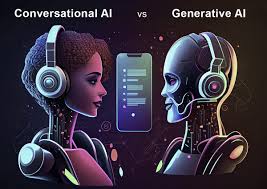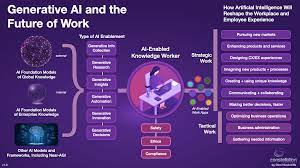
Generative AI, a marvel of modern technology, stands as a testament to human innovation and the boundless capabilities of artificial intelligence. It’s more than just lines of code; it’s a gateway to a realm where machines can create, imagine, and inspire.
At its core, generative AI revolves around neural networks, mimicking the intricate workings of the human brain. Through these algorithms, it learns patterns, understands nuances, and then, remarkably, generates entirely new content autonomously. It’s the artistry of the digital age, the fusion of human creativity and computational power.

One of the most captivating aspects of generative AI lies in its ability to create art. Picture an artist who doesn’t wield a brush or palette but instead collaborates with algorithms to birth breathtaking visuals and thought-provoking pieces. Landscapes, portraits, abstract creations—the boundaries of artistic expression stretch endlessly.
Music, too, finds a new voice through generative AI. Melodies that evoke emotions, compositions that stir the soul—all crafted by algorithms that comprehend musical patterns and weave them into harmonies that resonate with the human spirit. It’s an intriguing harmony between human ingenuity and machine intelligence.

Yet, the influence of generative AI transcends the realms of art. It permeates industries like fashion, gaming, and even scientific research. It’s a catalyst for innovation, pushing the boundaries of what we once thought possible.
However, with this incredible power comes responsibility. Questions of ethics and ownership loom large. Who owns the creations of these algorithms? What are the implications for originality and authenticity?
Moreover, generative AI challenges our perception of creativity and human ingenuity. Can a machine truly grasp the depth of emotions embedded in art? The debate continues, raising philosophical questions about the essence of being human.
Nevertheless, the allure of generative AI persists. It’s a symphony of innovation, where humans and machines harmonize to compose a future teeming with possibilities. As we navigate this landscape, it’s crucial to embrace the potential while also acknowledging the ethical considerations that come hand in hand.

Generative AI is not merely a tool; it’s a testament to human imagination and the ever-evolving relationship between man and machine. It’s a canvas where creativity and technology dance in unison, shaping a world where the boundaries of creation are continually pushed further.
In this symphony of innovation, we stand as both creators and conductors, shaping a future where the melodies of generative AI continue to inspire us to dream bigger, create without bounds, and explore the infinite possibilities of a digitally empowered world.




